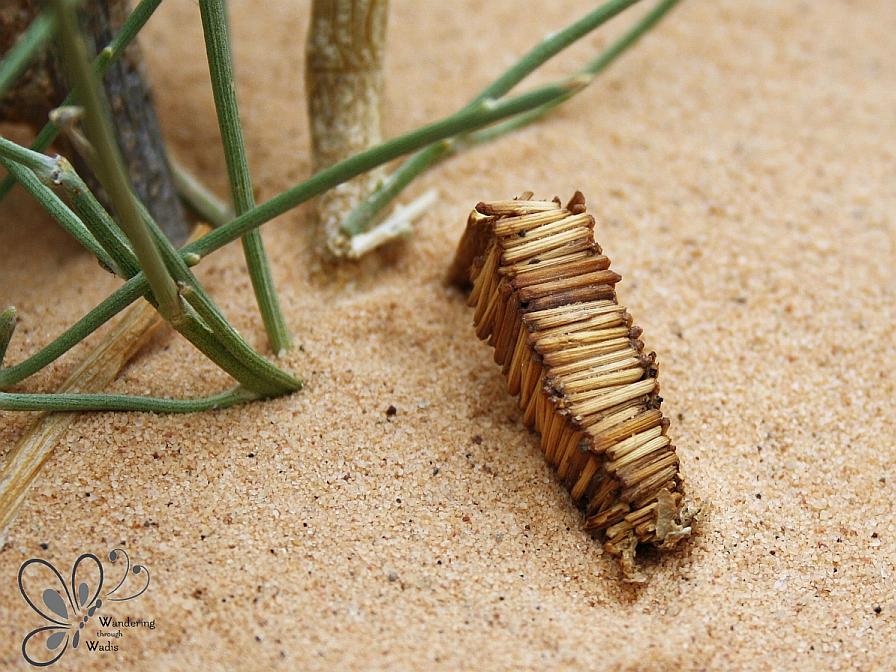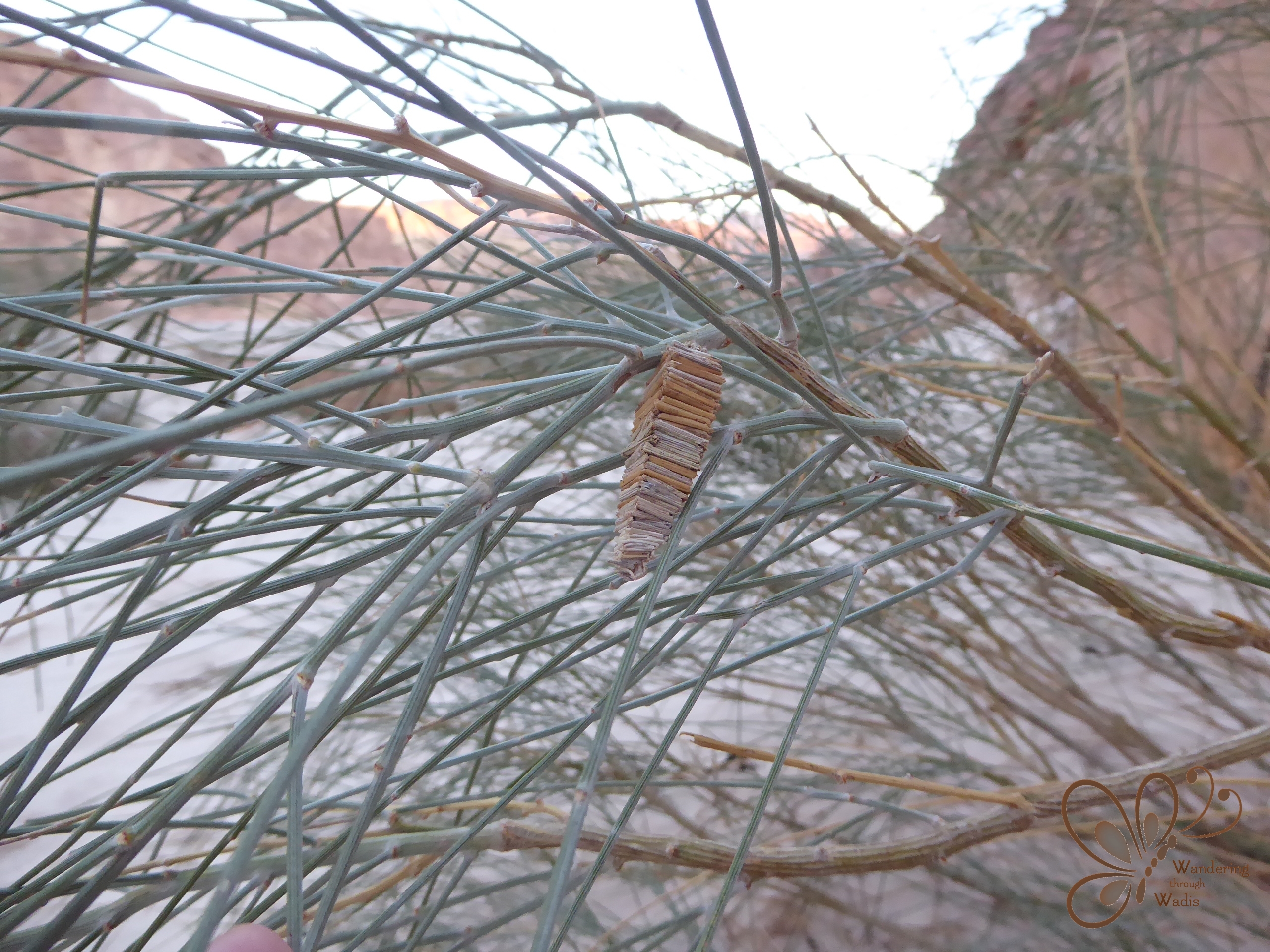One of the most fascinating things that I have come across while wandering through wadis is the case of the Amicta Bagworm Moth (Amicta quadrangularis).



The first time I spotted one, there were several hanging on stems of a White Broom bush, called ratam in Arabic, in Wadi Arada. I had absolutely no idea what I was looking at. I was simply amazed by the precision of the architecture! Thanks to members of Project Noah and my own further research, I was able to identify the creature behind this masterpiece – an Amicta Bagworm Moth.

Bagworm moths, a name given to those in the Psychidae family, go through a 4-stage metamorphosis typical of moths, from egg to larva (caterpillar) to pupa (cocoon) to adult. As soon as the egg of a bagworm moth hatches, however, the larva begins to build a protective case to hide in. The “bag” or case is constructed out of silk and items found in the environment. In the case of the Amicta Bagworm, that’s the thin branches of its host plant, White Broom (Retama raetam), giving it some camouflage as added protection. And what do they need protection from? Mostly birds and parasitic flies and wasps.

These caterpillars go through five larval stages and, as it grows, the caterpillar continues to add longer material to the four sides at the front of the case. The hungry caterpillar extends its head and thorax through the opening at the front in order to eat leaves. There is an opening at the back through which it excretes waste. And the caterpillar moves around, carrying its case behind it on its abdomen.
When the caterpillar is ready to pupate, it attaches the case to a branch of the ratam bush. As adults, the female Amicta moth does not have wings and she does not leave the case. The male moths will come to her. She lays her eggs, as many as 1500, in her case and then dies. Female sacs are larger than the male ones.

Each type of bagworm moth creates a unique case, specific to its own species. The cases, therefore, are often very useful when trying to identify these moths. I have never seen, as far as I know, the caterpillars or the moths of the Amicta Bagworm, but I love the design of their homes! Have you ever spotted these fascinating creations in the wadis?
References:
Husseini, M. & Askar, S. (2019). The bagworm, Amicta quadrangularis (Christoph), and its natural enemies in Northern Egypt (Lepidoptera: Psychidae). Egyptian Journal of Biological Pest Control, 29:30. https://doi.org/10.1186/s41938-019-0127-7
[UPDATED: December 25, 2023 with new photographs and additional information.]

Bernadette thank you for all your Wandering through Wadis posts. I have enjoyed them all and learnt so much about the wildlife and fauna in the Wadis from you. I had never heard of this moth – how amazing it is, like all of nature. Looking forward to the next post and more exciting discoveries.
LikeLike
Aw, Thanks so much, Chris! I love knowing that someone else is loving these posts as much as me. 🙂
LikeLike
Hi
I have one of these now under my cam to check activity.but can not find a proper person to link to for follow up.can u help me?
LikeLike
What are you trying to follow up on?
LikeLike
Pingback: ANIMAIS CONSTRUTORES E SUAS CASAS INTELIGENTES
Landed on your post today – mystery of the bag worm case s9olved! I have one in a minature vitrine, but set aside all thought of it. The 3cm case is immaculate, all ‘horizontally’ aligned, wide in the middle. So, I now suspect the origin of the specimen is Egypt, where 30+ years ago I spent a college year. Wild. Nice to go back and remember the landscapes. Thanks for your post.
LikeLiked by 1 person
Thanks for sharing your story!
LikeLike